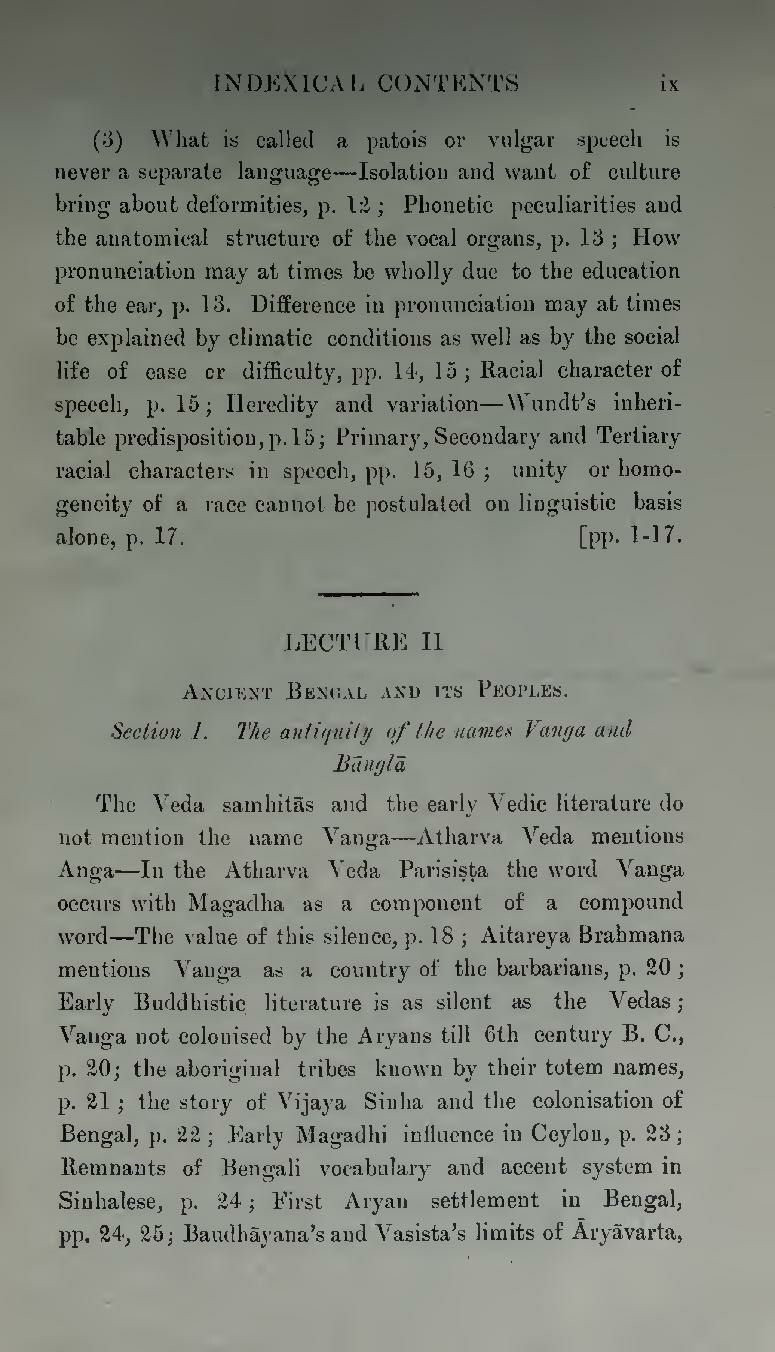(3) What is called a patois or vulgar speech is never a separate language—Isolation and want of culture bring about deformities, p. 12; Phonetic peculiarities and the anatomical structure of the vocal organs, p. 13; How pronunciation may at times be wholly due to the education of the ear, p. 13. Difference in pronunciation may at times be explained by climatic conditions as well as by the social life of ease or difficulty, pp. 14, 15; Racial character of speech, p. 15; Heredity and variation—Wundt's inheritable predisposition, p. 15; Primary, Secondary and Tertiary racial characters in speech, pp. 15, 16; unity or homogeneity of a race cannot be postulated on linguistic basis alone, p. 17.
The Veda samhitās and the early Vedic literature do not mention the name Vanga—Atharva Veda mentions Anga—In the Atharva Veda Parisiṣṭa the word Vanga occurs with Magadha as a component of a compound word—The value of this silence, p. 18; Aitareya Brahmana mentions Vanga as a country of the barbarians, p. 20; Early Buddhistic literature is as silent as the Vedas; Vanga not colonised by the Aryans till 6th century B. C, p. 20; the aboriginal tribes known by their totem names, p. 21; the story of Vijaya Sinha and the colonisation of Bengal, p. 22; Early Magadhi influence in Ceylon, p. 23; Remnants of Bengali vocabulary and accent system in Sinhalese, p. 24; First Aryan settlement in Bengal, pp. 24, 25; Baudhāyana's and Vasista's limits of Āryāvarta,
